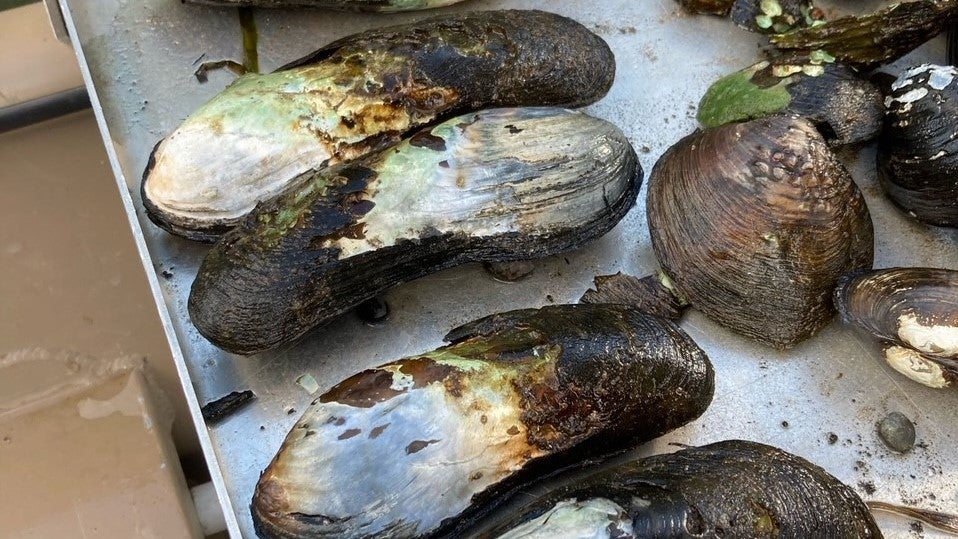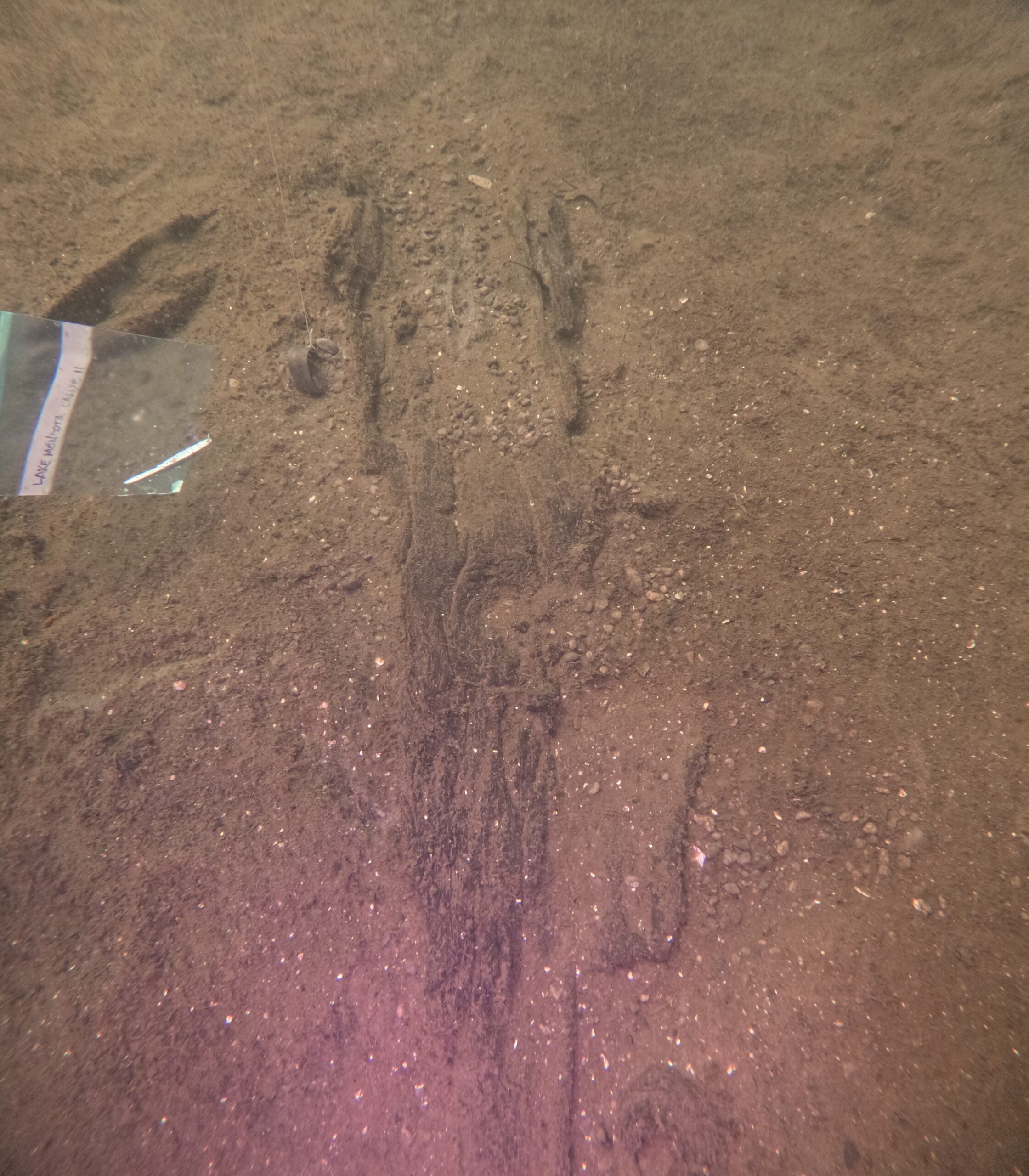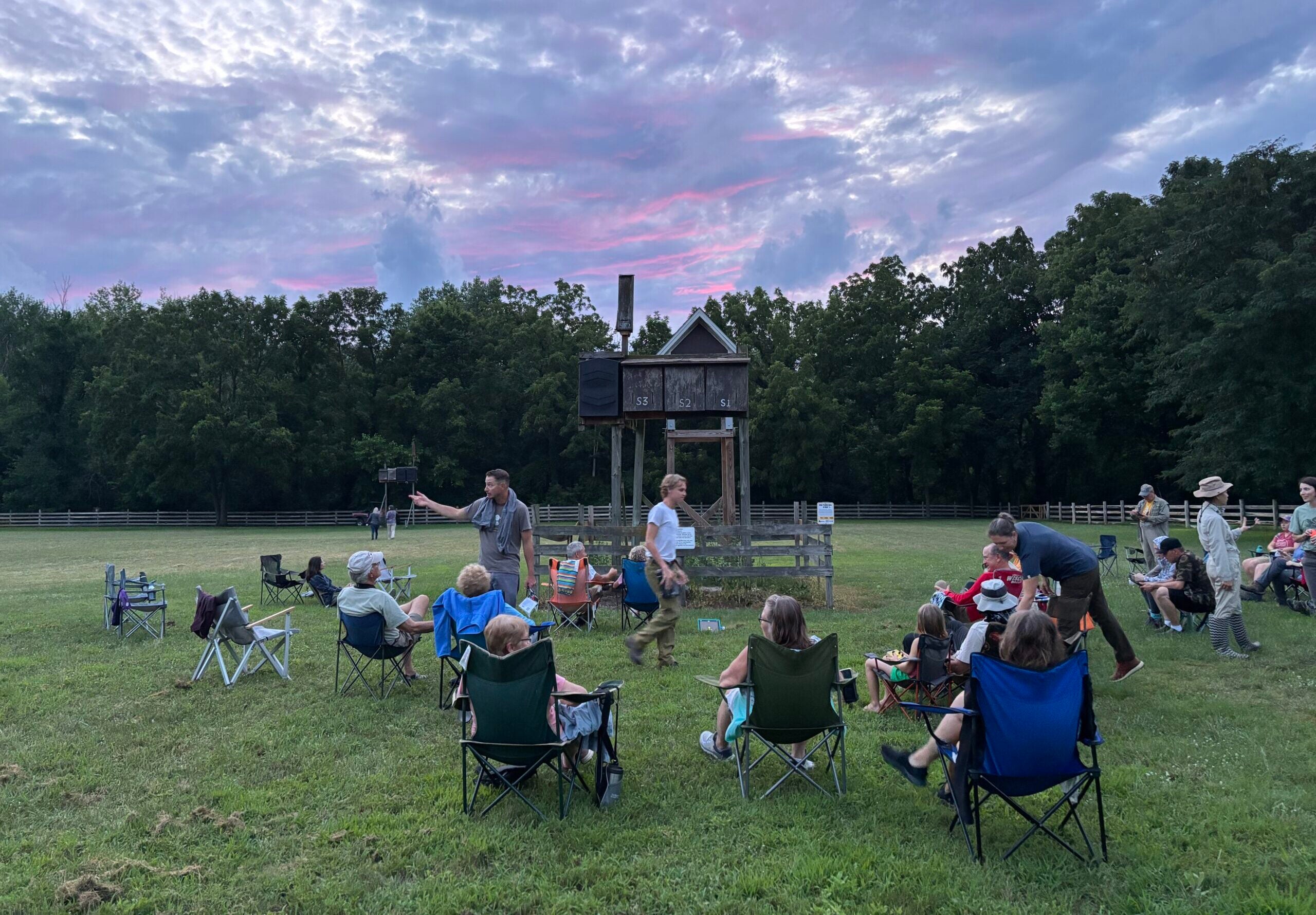A small cluster of rare, native mussels thought to be well over 100 years old was found in the upper St. Croix River this summer.
Federal and state agencies, including the Wisconsin Department of Natural Resources, were surprised to find the spectaclecase mussels after researchers stopped searching for them in 1987.
Lisie Kitchel, a DNR conservation biologist, was on the team that found the mussels in August.
News with a little more humanity
WPR’s “Wisconsin Today” newsletter keeps you connected to the state you love without feeling overwhelmed. No paywall. No agenda. No corporate filter.
“Above the dam, we only found eight very ancient specimens,” Kitchel said. “The reason there was no young there is that their host fish is gone from that reach of the river. So, they haven’t been able to reproduce probably since the dam was built in 1907.”
“That population unfortunately is probably just going to die off,” Kitchel continued. “But we will keep monitoring it over time just to see how long these guys will live. They’ve been living a long time.”
Spectaclecase mussels need populations of mooneye and goldeye fish to act as hosts for reproduction. While the host fish aren’t found in the upper St. Croix River, they are found below the dam, meaning there are younger populations of spectaclecase mussels in the lower part of the river.
Wisconsin’s waters are home to 50 native mussel species. The spectaclecase is one of 24 mussel species that are endangered, threatened or in need of conservation.
[[{“fid”:”1632201″,”view_mode”:”embed_portrait”,”fields”:{“format”:”embed_portrait”,”alignment”:”right”,”field_image_caption[und][0][value]”:”%3Cp%3E%3Cem%3EPhoto%20courtesy%20of%20National%20Park%20Service%3C%2Fem%3E%3C%2Fp%3E%0A”,”field_image_caption[und][0][format]”:”full_html”,”field_file_image_alt_text[und][0][value]”:”spectaclecase mussel”,”field_file_image_title_text[und][0][value]”:”spectaclecase mussel”},”type”:”media”,”field_deltas”:{“1”:{“format”:”embed_portrait”,”alignment”:”right”,”field_image_caption[und][0][value]”:”%3Cp%3E%3Cem%3EPhoto%20courtesy%20of%20National%20Park%20Service%3C%2Fem%3E%3C%2Fp%3E%0A”,”field_image_caption[und][0][format]”:”full_html”,”field_file_image_alt_text[und][0][value]”:”spectaclecase mussel”,”field_file_image_title_text[und][0][value]”:”spectaclecase mussel”}},”link_text”:false,”attributes”:{“alt”:”spectaclecase mussel”,”title”:”spectaclecase mussel”,”class”:”media-element file-embed-portrait media-wysiwyg-align-right”,”data-delta”:”1″}}]]While the spectaclecase is one of many endangered mussel species in the Midwest, younger populations are found in the lower St. Croix, the Black and the Wisconsin rivers in the state. Spectaclecase mussels have historically been found in 44 streams in 14 states along the Mississippi, Missouri and Ohio river basins. They have disappeared from three states entirely and are now found in only 20 streams of water.
The eight live mussels were put back where they were found.
Researchers did harvest the shells of dead mussels and will try this winter to determine how old the population is.
Mussels help filter contaminants from the water and are a food source for many animals and birds.
Spectaclecase mussels can grow up to 9 inches long and get their name from the shape of their shells, which are curved and elongated.
Wisconsin Public Radio, © Copyright 2025, Board of Regents of the University of Wisconsin System and Wisconsin Educational Communications Board.





